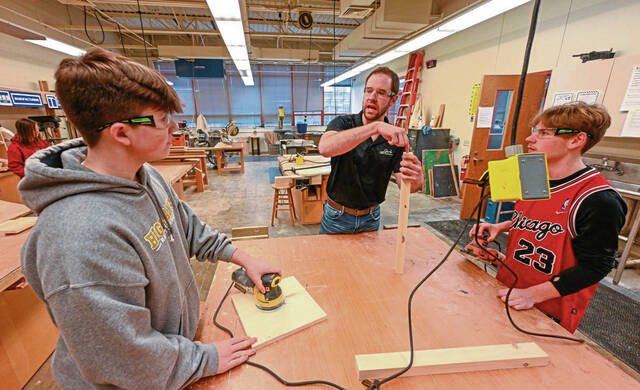Highlands administrators say focus on Workforce Readiness sets up all students for success
Curriculum changes in the Highlands School District are intended to expose students, as young as kindergartners, to options that will excite and prepare them for success after high school — whether that means college, trade school or employment.
A Career and Workforce Readiness Program is moving forward for all grade levels, with the goal that by the time students reach high school they will be prepared to choose what’s next.
For some, it will be college. Others, however, might choose technical school, the military or a job.
“I am very passionate about this program that we are designing for our students because it will improve their desire to attend school regularly and prepare them for success after high school,” Superintendent Monique Mawhinney said.
A series of “partner breakfasts” will be hosted in March to draw local business owners and local leaders into the conversation.
In addition to classes that teach job skills and other competencies, the district is asking for community partners to give students real-world exposure through on-site job shadowing and internships.
The district believes students learn best in real-life settings that provide on-the-job coaching or training from experts, Mawhinney said.
Tarentum Council President Scott Dadowski said borough officials are intrigued.
“If the borough can be a partner with our district to help prepare our students, we are definitely interested,” Dadowski said.
As a cyberschool administrator, Dadowski spends his days working with students to develop graduation plans on a daily basis, he said.
“Preparing students for life after high school and to be ready to enter the workforce is an idea that we all should focus on,” he said.
College isn’t for everyone, Dadowski said. For many, there needs to be a focus on workforce development.
Borough representatives will be attending at least one of the workshops to learn how to forge a partnership, he said.
The district is in the initial stages of the multiyear initiative, Mawhinney said, and it will require a significant amount of work.
Already, the school board modified the number of credits needed to graduate — from 24.5 to 24.
The move eliminated the requirement of 16 core content credits and introduced flexibility to allow students to choose classes that nurture their interests and prepare them for their next steps.
The proposed college path will include more rigorous classes and SAT preparation.
The trade/technical path will focus on skill-based classes and STEM curriculum, and the work pathway will focus on soft skills, interview preparation and some academics.
Administrators and teachers are working to redesign curricula, instruction and assessments to combine the state standards with the academic standards for career education and work, Mawhinney said.
The district would like to begin offering job-shadowing experiences to a select group of students as early as this spring.
Opportunities will be expanded each year.
“The district is excited to partner with our local and neighboring businesses in hopes that we can give back to the community by developing well-rounded students who become productive employees,” she said.
Tawnya Panizzi is a TribLive reporter. She joined the Trib in 1997. She can be reached at tpanizzi@triblive.com.
Remove the ads from your TribLIVE reading experience but still support the journalists who create the content with TribLIVE Ad-Free.

